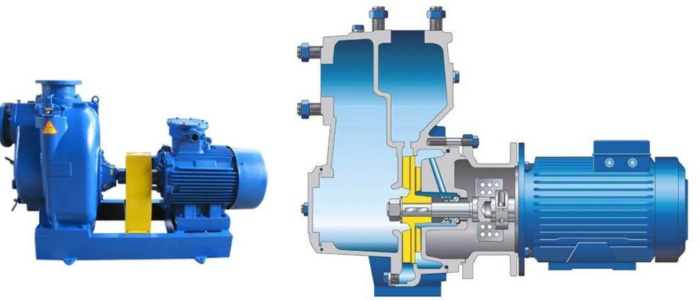Understanding the Working Mechanism of Self-Priming Pumps
Self-priming pumps are a specialized category of pumps designed to retain a small amount of liquid within their chamber to facilitate immediate operation without the need for manual priming. This feature makes them highly efficient in industries that require frequent start-stop operations, such as sanitation, chemical processing, and wastewater management.
Why Self-Priming Pumps Are Essential in Industrial Applications
Self-priming pumps play a crucial role in numerous industrial and hygienic processing tasks, including:
- Transporting liquids efficiently through process pipelines
- Pumping Clean-in-Place (CIP) solutions for sanitation
- Transferring fluids between storage vessels
- Ensuring rapid fluid evacuation from tanks and drums
Unlike standard pumps that require external priming before each operation, self-priming pumps maintain operational readiness, reducing downtime and enhancing workflow efficiency.
How Self-Priming Pumps Work: Step-by-Step Breakdown
1. Retaining Fluid for Priming
A self-priming pump retains liquid within its casing even when not in use. This stored fluid is crucial for initiating the priming cycle upon startup, allowing the pump to remove air from the suction line and create the necessary vacuum for liquid flow.
2. Handling Air Pockets Effectively
One of the standout features of self-priming pumps is their ability to eliminate air pockets, which can otherwise cause pump failure. These pumps blend residual air with the retained liquid to create an air-liquid mixture that is expelled through the discharge port, ensuring uninterrupted operation.
3. Suction and Discharge Process
Once the air is purged, the impeller generates centrifugal force, drawing liquid into the suction pipe and pushing it towards the discharge outlet. This continuous process maintains a steady flow of liquid, making self-priming pumps highly reliable for intermittent operations.
Self-Priming Pumps vs. Standard Centrifugal Pumps: Key Differences
While centrifugal pumps are widely used in industrial applications, not all of them are self-priming. Standard centrifugal pumps require manual priming or external priming assistance before operation, whereas self-priming models simplify the process through their inherent design.
| Feature | Self-Priming Pumps | Standard Centrifugal Pumps |
| Priming Requirement | No manual priming needed | Requires manual priming before operation |
| Handling of Air Pockets | Effectively eliminates air | Air can cause pump failure |
| Operational Readiness | Always retains liquid for instant operation | Requires complete filling before startup |
| Installation Complexity | Simplified, fewer external components | Often requires additional priming systems |
Advantages of Self-Priming Centrifugal Pumps
1. High Versatility for Various Fluids
Self-priming pumps handle a wide range of liquids, including:
- Slurries and viscous fluids
- Corrosive chemicals
- Water and CIP solutions This adaptability makes them ideal for industries such as food processing, pharmaceuticals, and wastewater treatment.
2. Reliable Operation in Unsubmerged Conditions
Unlike submersible pumps, self-priming models can function effectively even when not submerged, ensuring operational continuity in fluctuating liquid levels.
3. Ideal for Intermittent Use
In industries where pumps frequently start and stop, self-priming pumps eliminate the need for manual intervention, thereby reducing downtime and improving productivity.
Potential Limitations of Self-Priming Pumps
While self-priming pumps offer several benefits, they also come with certain limitations:
Dependence on Initial Priming Liquid
For effective operation, self-priming pumps rely on the liquid stored within their chamber. If this liquid is lost, re-priming is necessary before startup.
Larger Footprint Compared to Standard Models
Due to their built-in liquid reservoir, self-priming pumps tend to be bulkier than standard centrifugal pumps. This size difference can be a constraint in space-limited installations.
Proximity to the Liquid Source
To ensure efficient operation, self-priming pumps need to be placed close to the production line to prevent liquid depletion in the reservoir.
Optimizing Self-Priming Pump Performance: Best Practices
To maximize efficiency and longevity, follow these key practices:
- Regular Maintenance: Periodically check for air leaks and ensure the reservoir retains enough priming liquid.
- Proper Installation: Position the pump near the liquid source to minimize suction-related challenges.
- Routine Inspections: Examine impellers and seals for wear and tear to prevent unexpected failures.
- Use Recommended Fluids: Ensure compatibility with the liquid being pumped to prevent material degradation.

